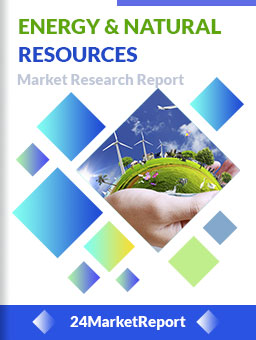
COMPANIES COVERED
BAICDownload FREE Report Sample
Download Free sampleHybrid and Electric Vehicles (HEVs) refer to automobiles that utilize one or more electric motors, powered either by batteries alone (pure electric) or in combination with an internal combustion engine (hybrid). Hybrid vehicles blend traditional fuel engines with electric propulsion, while electric vehicles (EVs) operate solely on electricity stored in rechargeable batteries. This dual-technology approach significantly improves fuel efficiency, reduces carbon emissions, and supports sustainable mobility.
The global transition toward sustainable transportation, rising environmental awareness, advancements in battery technology, and strong governmental support are pivotal to the growing popularity of HEVs. These vehicles cater to a wide range of applications, from personal passenger cars to commercial and heavy-duty vehicles.
Market Size
Global Hybrid and Electric Vehicles Market was valued at USD 218,930 million in 2024 and is projected to grow at a CAGR of 24.50%, reaching approximately USD 1,573,364.84 million by 2032.
This exponential growth is largely driven by increasing consumer demand for eco-friendly alternatives, fuel cost savings, and growing regulations targeting vehicular emissions.
In North America, the market size was estimated at USD 83,522.37 million in 2024, with an expected CAGR of 21.00% from 2025 to 2032.
To know more about market statistics, Download a FREE Sample copy
Factors such as enhanced EV infrastructure, government subsidies, and rising fuel prices are accelerating adoption across the region.
Market Dynamics (Drivers, Restraints, Opportunities, and Challenges)
Drivers
Environmental Regulations: Stringent emission standards are pushing automakers toward electric mobility.
Government Incentives: Tax rebates, subsidies, and reduced registration fees promote HEV adoption.
Fuel Efficiency: HEVs offer significant savings in fuel costs, appealing to cost-conscious consumers.
Technological Advancements: Innovations in lithium-ion batteries, regenerative braking, and smart charging systems drive growth.
Restraints
High Initial Cost: HEVs often cost more upfront than ICE counterparts.
Battery Limitations: Charging time, battery lifespan, and limited driving range can deter potential buyers.
Infrastructure Deficit: Many regions still lack widespread EV charging networks.
Opportunities
Emerging Markets: Rapid urbanization and rising disposable incomes create fertile ground in Asia-Pacific and South America.
Autonomous & Connected Vehicles: Integration with HEVs opens new business models.
Corporate Fleets Electrification: Logistics and transport firms are shifting to HEVs for cost and environmental reasons.
Challenges
Supply Chain Issues: Global shortages of semiconductor chips and rare earth materials affect production.
Grid Load & Energy Supply: Massive adoption may strain power infrastructure.
Consumer Awareness: Misconceptions about performance and maintenance hinder adoption.
Regional Analysis
North America
Dominated by the U.S., the market is growing due to strong regulatory support (e.g., California ZEV program).
Major investments in charging infrastructure by companies like Tesla and Electrify America.
Commercial fleet electrification gaining momentum.
Europe
Aggressive policies under the European Green Deal.
Germany, France, and the UK are leaders in EV penetration.
Luxury carmakers like BMW and Audi rapidly expanding their electric lineups.
Asia-Pacific
Largest market globally, led by China.
High-volume production supported by massive government subsidies.
Japan and South Korea contributing via advanced battery technology and exports.
South America
Brazil and Argentina emerging as growth centers.
Government initiatives and rising fuel costs fostering gradual adoption.
Middle East & Africa
Slower growth due to high dependence on oil.
The UAE and South Africa lead adoption through smart city initiatives and sustainability agendas.
Competitor Analysis (in brief)
Major players are competing through innovation, global expansion, strategic partnerships, and aggressive R&D investments:
Tesla: Leader in battery range and autonomous tech.
Toyota: Pioneer in hybrid vehicles with robust global supply.
BYD: Dominates China's EV market with strong exports.
Ford: Expanding electric lineup under its Ford+ strategy.
BMW & Hyundai-Kia: Investing heavily in modular EV platforms.
Global Hybrid and Electric Vehicles Market: Market Segmentation Analysis
Hybrid and Electric Vehicles Market provides a deep insight into the global Hybrid and Electric Vehicles Market, covering all its essential aspects. This ranges from a macro overview of the market to micro details of the market size, competitive landscape, development trend, niche market, key market drivers and challenges, SWOT analysis, value chain analysis, etc.
The analysis helps the reader to shape the competition within the industries and strategies for the competitive environment to enhance the potential profit. Furthermore, it provides a simple framework for evaluating and assessing the position of the business organization. The report structure also focuses on the competitive landscape of the Global Hybrid and Electric Vehicles Market. Hybrid and Electric Vehicles Market introduces in detail the market share, market performance, product situation, operation situation, etc., of the main players, which helps the readers in the industry to identify the main competitors and deeply understand the competition pattern of the market.
In a word, Hybrid and Electric Vehicles Market is a must-read for industry players, investors, researchers, consultants, business strategists, and all those who have any kind of stake or are planning to foray into the Hybrid and Electric Vehicles Market in any manner.
Market Segmentation (by Application)
Market Segmentation (by Type)
Key Company
Geographic Segmentation
FAQ Section
What is the current market size of the Hybrid and Electric Vehicles market?
Which are the key companies operating in the Hybrid and Electric Vehicles market?
What are the key growth drivers in the Hybrid and Electric Vehicles market?
Which regions dominate the Hybrid and Electric Vehicles market?
What are the emerging trends in the Hybrid and Electric Vehicles market?
Key Benefits of This Market Research:
Industry drivers, restraints, and opportunities covered in the study
Neutral perspective on the market performance
Recent industry trends and developments
Competitive landscape & strategies of key players
Potential & niche segments and regions exhibiting promising growth covered
Historical, current, and projected market size, in terms of value
In-depth analysis of the Hybrid and Electric Vehicles Market
Overview of the regional outlook of the Hybrid and Electric Vehicles Market:
Key Reasons to Buy this Report:
Access to date statistics compiled by our researchers. These provide you with historical and forecast data, which is analyzed to tell you why your market is set to change
This enables you to anticipate market changes to remain ahead of your competitors
You will be able to copy data from the Excel spreadsheet straight into your marketing plans, business presentations, or other strategic documents
The concise analysis, clear graph, and table format will enable you to pinpoint the information you require quickly
Provision of market value data for each segment and sub-segment
Indicates the region and segment that is expected to witness the fastest growth as well as to dominate the market
Analysis by geography highlighting the consumption of the product/service in the region as well as indicating the factors that are affecting the market within each region
Competitive landscape which incorporates the market ranking of the major players, along with new service/product launches, partnerships, business expansions, and acquisitions in the past five years of companies profiled
Extensive company profiles comprising of company overview, company insights, product benchmarking, and SWOT analysis for the major market players
The current as well as the future market outlook of the industry concerning recent developments which involve growth opportunities and drivers as well as challenges and restraints of both emerging as well as developed regions
Includes in-depth analysis of the market from various perspectives through Porters five forces analysis
Provides insight into the market through Value Chain
Market dynamics scenario, along with growth opportunities of the market in the years to come
6-month post-sales analyst support
Customization of the Report
In case of any queries or customization requirements, please connect with our sales team, who will ensure that your requirements are met.
Chapter Outline
Chapter 1 mainly introduces the statistical scope of the report, market division standards, and market research methods.
Chapter 2 is an executive summary of different market segments (by region, product type, application, etc), including the market size of each market segment, future development potential, and so on. It offers a high-level view of the current state of the Hybrid and Electric Vehicles Market and its likely evolution in the short to mid-term, and long term.
Chapter 3 makes a detailed analysis of the market's competitive landscape of the market and provides the market share, capacity, output, price, latest development plan, merger, and acquisition information of the main manufacturers in the market.
Chapter 4 is the analysis of the whole market industrial chain, including the upstream and downstream of the industry, as well as Porter's five forces analysis.
Chapter 5 introduces the latest developments of the market, the driving factors and restrictive factors of the market, the challenges and risks faced by manufacturers in the industry, and the analysis of relevant policies in the industry.
Chapter 6 provides the analysis of various market segments according to product types, covering the market size and development potential of each market segment, to help readers find the blue ocean market in different market segments.
Chapter 7 provides the analysis of various market segments according to application, covering the market size and development potential of each market segment, to help readers find the blue ocean market in different downstream markets.
Chapter 8 provides a quantitative analysis of the market size and development potential of each region from the consumer side and its main countries and introduces the market development, future development prospects, market space, and capacity of each country in the world.
Chapter 9 shares the main producing countries of Hybrid and Electric Vehicles, their output value, profit level, regional supply, production capacity layout, etc. from the supply side.
Chapter 10 introduces the basic situation of the main companies in the market in detail, including product sales revenue, sales volume, price, gross profit margin, market share, product introduction, recent development, etc.
Chapter 11 provides a quantitative analysis of the market size and development potential of each region during the forecast period.
Chapter 12 provides a quantitative analysis of the market size and development potential of each market segment during the forecast period.
Chapter 13 is the main points and conclusions of the report.

Speak to our Custom Research Team and get the Custom Research in a budget
Custom ResearchFrequently Asked Questions ?
A license granted to one user. Rules or conditions might be applied for e.g. the use of electric files (PDFs) or printings, depending on product.
A license granted to multiple users.
A license granted to a single business site/establishment.
A license granted to all employees within organisation access to the product.
Upto Working 24 to 48 hrs
Upto 72 hrs max - Weekends and Public Holidays
Online Payments with PayPal and CCavenue
Wire Transfer/Bank Transfer
Hard Copy




 Industry Market Size
Industry Market Size SWOT Analysis
SWOT Analysis Industry Major Players
Industry Major Players Revenue Forecasts
Revenue Forecasts Historical and Forecast Growth
Historical and Forecast Growth Profitability Analysis
Profitability Analysis
























